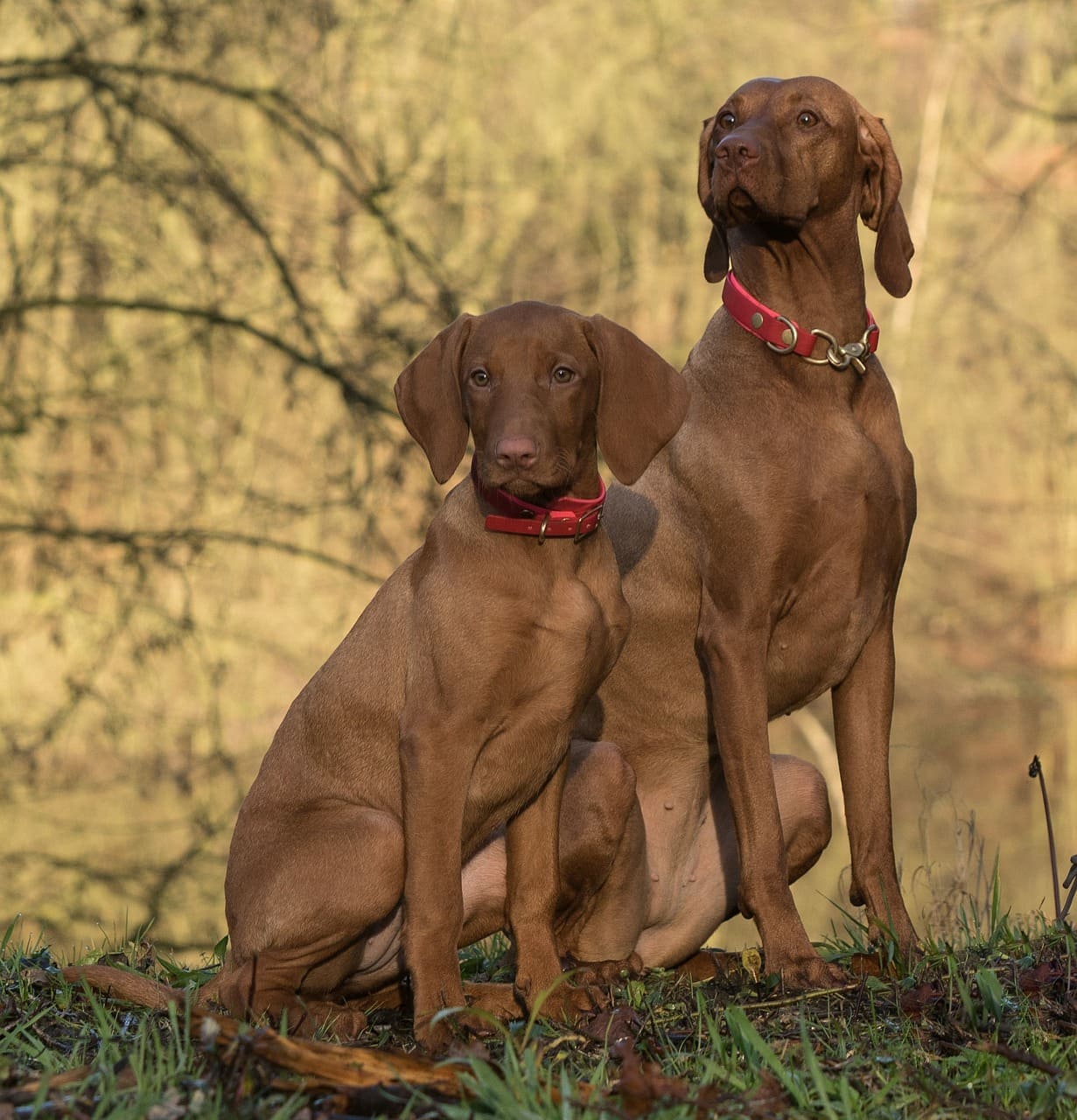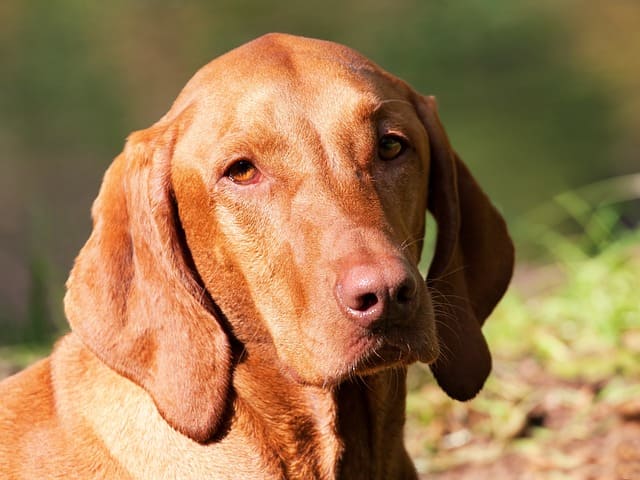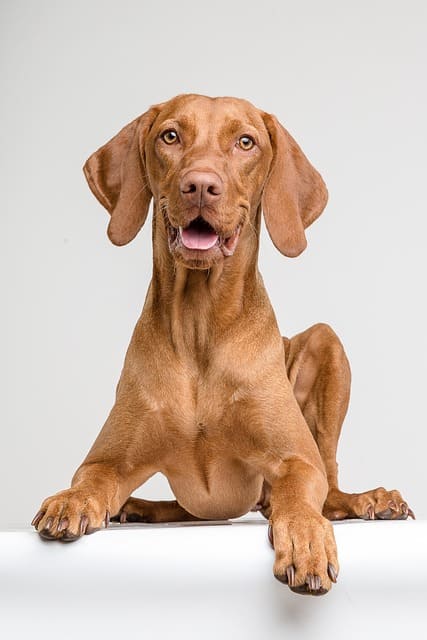The Vizsla, often pronounced as “veesh-la,” is a breed that exudes elegance, athleticism, and affection. Known for their striking rust-colored coat, expressive eyes, and boundless energy, Vizslas have become cherished companions for those who appreciate an active and loyal canine friend. In this comprehensive guide, we will explore the history, physical characteristics, temperament, exercise needs, grooming requirements, health considerations, and more, to provide you with a detailed understanding of the Vizsla dog breed.
History of the Vizsla

Understanding the history of the Vizsla helps us appreciate the breed’s origins and the roles they’ve played throughout the years.
Ancient Origins
The Vizsla’s lineage can be traced back to ancient Hungary, where they were prized as versatile hunting dogs. They are believed to have been bred from a mix of breeds, including the Transylvanian Hound and the Turkish Yellow Dog.
Royal Companions
Historical records indicate that Vizslas were used as hunting and falconry dogs for Hungarian nobility during the Middle Ages. They were considered invaluable for their agility, keen sense of smell, and speed.
The Breed’s Name
The name “Vizsla” means “pointer” in Hungarian, which accurately describes their role in tracking and pointing out game for hunters.
The Breed Standard
The breed’s standard was first established in 1920 in Hungary. Their distinctive appearance and working abilities were preserved and refined according to these standards.
American Popularity
Vizslas made their way to the United States in the mid-20th century, where they gained popularity for their friendly nature and excellent hunting skills. Today, they are recognized by the American Kennel Club (AKC).
Physical Characteristics
Vizslas possess a graceful and athletic build, making them distinctive among dog breeds.
Coat
Vizslas have a short, dense, and sleek coat that lies close to their body. Their coat is a striking solid rust color, giving them a unique and eye-catching appearance.
Size
Vizslas are classified as a medium-sized breed. Adult males typically stand between 22 to 24 inches (56 to 61 cm) at the shoulder, while adult females are slightly smaller, usually ranging from 21 to 23 inches (53 to 58 cm). Their weight typically falls within the range of 45 to 65 pounds (20 to 29 kg).
Head
Vizslas have a well-proportioned head with a moderate stop, which is the point where their forehead meets their muzzle. Their expressive eyes are typically a shade of brown, and their ears are moderately long and set high on the head.
Tail
The breed’s tail is typically docked, although this practice is declining in popularity. In countries where tail docking is prohibited, Vizslas have a natural tail that is carried high.
Temperament and Behavior
Vizslas are known for their friendly, affectionate, and energetic nature. Understanding their temperament is essential to provide them with the care and environment they need.
1. Affectionate
Vizslas are known for their affectionate and loving nature. They form strong bonds with their owners and are often described as “velcro dogs” for their desire to be close to their human family members.
2. Energetic
One of the most defining characteristics of Vizslas is their boundless energy. They are active dogs that require regular exercise to stay happy and healthy.
3. Playful
Vizslas have a playful and exuberant personality. They enjoy interactive playtime with their owners, making them excellent companions for active individuals and families.
4. Intelligent
Vizslas are highly intelligent dogs that excel in various canine activities. They are quick learners and can be trained effectively with positive reinforcement methods.
5. Social
Vizslas are typically social dogs and get along well with other pets and children. Early socialization is important to ensure they are well-adjusted and friendly.
6. Alert
They have a natural instinct to be vigilant and make effective watchdogs. They will alert their owners to any unusual activities or visitors.
7. Hunting Instinct
Vizslas have a strong hunting instinct due to their history as bird dogs. They may exhibit a strong prey drive, particularly for small animals.
8. Minimal Shedding
Vizslas have a short coat that sheds minimally, making them a good choice for people who prefer a cleaner home.
9. Minimal Odor

Vizslas are not known for having a strong doggy odor, which can be a relief for those who are sensitive to smells.
10. Affectionate with Family
They are known for being affectionate with their family members and often seek physical contact and cuddles.
Health Considerations
Vizslas are generally healthy dogs, but they are predisposed to certain health issues that require careful attention.
Hip Dysplasia
Hip dysplasia is a common condition in many dog breeds, including Vizslas. Regular vet check-ups and weight management are important for hip health.
Canine Cancer
Vizslas are known to be at a slightly higher risk of developing cancer, particularly hemangiosarcoma. Early detection and preventive measures are crucial.
Epilepsy
Some Vizslas may be prone to epilepsy, a neurological disorder. Medication and close monitoring are necessary to manage seizures.
Eye Conditions
They may be susceptible to certain eye conditions such as cataracts and progressive retinal atrophy (PRA). Regular eye check-ups can help detect and manage these issues.
Thyroid Problems
Hypothyroidism, an underactive thyroid, can occur in Vizslas. Regular blood tests and medication can help manage thyroid-related conditions.
Allergies
Vizslas may be prone to allergies, which can manifest as skin irritations or digestive issues. Identifying and managing allergens can help alleviate these problems.
Grooming Needs
Grooming a Vizsla is relatively straightforward due to their short coat.
Brushing
Vizslas have short hair that requires minimal brushing to remove loose hair and distribute skin oils. A weekly brushing is usually sufficient.
Bathing
Vizslas have minimal odor and typically do not require frequent baths. Regular baths can help keep their coat clean and fresh.
Ear Cleaning
Regular ear cleaning is essential for Vizslas to prevent infections, particularly if they swim or have floppy ears.
Nail Trimming
Regular nail trimming is necessary to maintain their paw health. Overgrown nails can lead to discomfort and mobility issues.
Exercise Needs
Vizslas are a high-energy breed that requires regular exercise and mental stimulation.
Daily Exercise
Daily exercise is essential for Vizslas to expel energy and maintain physical and mental health. A vigorous walk or run is ideal.
Interactive Play
Vizslas thrive on interactive play with their owners. Games like fetch, agility training, and puzzle toys can provide mental stimulation.
Obedience Training
Training sessions are an excellent way to challenge their intelligence and reinforce their bond with their owner.
Outdoor Activities
Vizslas excel in outdoor activities such as hiking and exploring. These activities engage their physical and mental abilities.
Socialization
Proper socialization is crucial for Vizslas to ensure they are well-adjusted and friendly. Early socialization with different people, pets, and environments can help prevent shyness or anxiety.
Is a Vizsla Right for You?
Deciding whether a Vizsla is the right dog for you depends on your lifestyle, preferences, and willingness to meet their specific needs. To help you make an informed choice, consider the following factors:
1. Exercise Commitment
Are you prepared to provide a Vizsla with the daily exercise and playtime they need to stay happy and healthy? Their high energy level makes them unsuitable for a sedentary lifestyle.
2. Mental Stimulation
Vizslas thrive on mental challenges. Can you provide them with interactive toys, puzzles, and training to keep their minds engaged?
3. Socialization Efforts
Do you have the time and commitment to socialize your Vizsla properly, ensuring they are well-adjusted and friendly with other pets and people?
4. Training Dedication
Vizslas are intelligent dogs that require consistent and positive reinforcement training. Are you patient and capable of handling a strong-willed but eager-to-please dog?
5. Health Care
Are you prepared for potential health concerns that Vizslas may face and willing to invest in regular vet check-ups and preventive care?
6. Space and Yard
Do you have a spacious yard or access to outdoor areas where your Vizsla can run and play? Adequate outdoor space is essential for their well-being.
7. Experience
Have you had experience with active and intelligent dog breeds before? Familiarity with their characteristics can be an asset when raising a Vizsla.
8. Lifestyle Compatibility
Does your daily routine and activity level align with the high-energy nature of Vizslas? They require companionship and regular exercise.
If your lifestyle aligns with the characteristics and needs of a Vizsla, and you are prepared to address their specific requirements, this breed can become an affectionate and devoted addition to your family. With the right care, attention, and commitment, a Vizsla can offer years of companionship, loyalty, and the joy of having an energetic and loving friend by your side.
Conclusion

Vizslas are a unique and affectionate breed known for their boundless energy, friendly nature, and striking appearance. While they have specific needs and challenges, they can be wonderful companions for individuals or families who can meet those requirements.
Before bringing a Vizsla into your life, carefully evaluate the information and characteristics outlined in this guide. If you can meet their specific needs and are prepared to provide love and care, a Vizsla can become a cherished member of your family, offering years of loyalty, enthusiasm, and the delight of having an affectionate and active friend by your side.
